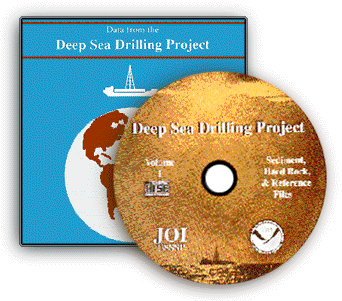

Converts DSDP "PALEO".DAT files to tab-delimited ASCII TEXT files.
This application converts DSDP "PALEO".DAT files to tab-delimited
ASCII TEXT files.
The resulting files may be used with spreadsheet, statistics and plotting
applications on any platform.


See announcement: DSDP Paleo data conversion
announcement.
| Operation:
1) In the Options menu, set Special handling options. 2) Open a "PALEO".REF file; this loads taxa names and codes (required). 3) Open the AGECODE.REF file; this loads geologic age names and codes (optional). 4) Open the SITESUM.DAT file; this loads site specific information (optional). 5) Open a "PALEO".DAT data file; this loads sample specific information (required). 6) Select a destination to save the converted data files. The converted data files will be named for the leg, site number, hole
and author; such as,
The converted data is saved as an Excel or a SimpleText TEXT file with:
Once in spreadsheet format, the utility of the occurrence data is greatly
enhanced. Range charts may be constructed or statistical analyses performed.
Use a proven commercial spreadsheet or statistics application to manipulate
the data.
DSDP PALEO.DAT data conversion to spreadsheet format using DSDPtoSpread
1.0
Initially, I grouped all samples from the same hole and analysed by the same author as a data set. This worked fine for the earlier holes, but later holes had data "flip-flopping" between authors. This created numerous data sets for the same hole and each data set had large sample gaps. I settled on creating data sets that would be the most useful for biostratigraphy. Functions:
Price: $50 US retail, if purchased separately. Free with
WellPlot
3.0 software package.
NOTE: The converted data will be available free of charge from NGDC/NOAA via ftp server. Some paleo data types are available at the GEOMAR web site. |

Pierre A. Zippi
7518 Twin Oaks Court
Garland, Texas 75044
(972)-496-3642
email: paz@pazsoftware.com
Go to: PAZ Software Homepage